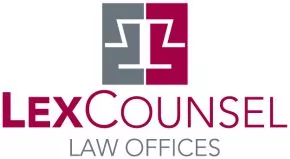The recently implemented Insolvency & Bankruptcy Code, 2016 ("Code"), which streamlines the insolvency and liquidation process in India, has lately become the subject of varying interpretations by the National Company Law Tribunal ("Tribunal").
Conflicting interpretations as to what constitutes a "dispute in existence" have surfaced between the Delhi and the Mumbai benches of the Tribunal.
The phrase "dispute in existence" assumes significance as it is largely the only legal defence that a corporate debtor can take to avoid insolvency/liquidation proceedings initiated by an operational creditor. The survival of the corporate debtor therefore to a large extent depends on whether there exists a dispute concerning the claims of the operational creditor.
Provisions of the Code:
In terms of the Code, an operational creditor can file an insolvency application before the Tribunal against a corporate debtor after the expiry of 10 days of service of the operational creditor's demand notice on the corporate debtor ("Demand Notice"), provided that the operational creditor has, within these 10 days:
- neither received repayment of the operational debt from the corporate debtor;
- nor received from the corporate debtor any notice of the "existence of a dispute", if any, and record of the pendency of suit or arbitration proceeding filed before receipt of such notice/invoice.
Further, the Code defines the term "dispute" to include suits or arbitration proceedings relating to existence of the amount of debt, quality of goods/service or breach of a representation/warranty.
The Code empowers the Tribunal to either admit or reject the operational creditor's insolvency application based on whether or not a notice of dispute (in existence) has been received by such operational creditor from the corporate debtor as aforesaid.
The Judicial Dilemma:
In practice, within a short span of time since operationalization of the Code, many insolvency applications have been preferred before the Tribunal where:
i. the claims are either not disputed by the corporate debtor (making it easier for the Tribunal to take a judicial call to commence the insolvency resolution process); or
ii. the claims are already disputed by the corporate debtor in a suit or in an arbitration proceeding (again making it easier for the Tribunal to take a judicial call and reject the insolvency application).
The Tribunal's judicial call however becomes difficult (and has given rise to differing interpretations) in cases where operational creditor's claims are disputed by the corporate debtor, whether before or during the 10 days' response period post service of the Demand Notice, but no suit or arbitration proceeding has been initiated concerning such claim(s) of the operational creditor.
On the one hand, if the Tribunal takes a strict interpretation of the law, and holds that a "dispute in existence" shall necessarily mean pendency of a suit or an arbitration proceeding prior to receipt of the Demand Notice from the operational creditor, the Tribunal is likely to direct commencement of insolvency resolution process even in those cases where genuine disputes exist regarding quality of goods or services or regarding a contractual breach. The insolvency resolution process – coupled with the trauma attached to it for the company, its employees as well as its business relationships, contracts (containing clauses stipulating automatic termination upon commencement of insolvency proceedings) and market sentiments – would make the Code an excellent tool for extortion in cases where the dispute is at pre-adjudication stage (even if it is in mediation/conciliation). A strict interpretation has, however, been taken by the Mumbai Bench of the Tribunal in the case of:
- Essar Projects India Ltd. vs. MCL Global Steel Pvt. Ltd. - The Tribunal, while interpreting the definition of "dispute" under the Code, held that "dispute in existence" means and includes raising a dispute in a court of law or arbitral tribunal before receipt of the Demand Notice issued under Section 8 of the Code. The Bench also observed that a dispute raised by a corporate debtor for the first time in its reply to the Demand Notice cannot be treated as a dispute in existence in the absence of the same being disputed before any court of law prior to receipt of the Demand Notice. With the above observations, the Bench admitted the insolvency application.
On the other hand, if the Tribunal takes a liberal interpretation, and only receipt of a notice of dispute is deemed sufficient to reject the application of the operational creditor, all corporate debtors can raise any frivolous dispute, even after receipt of the Demand Notice under the Code, to scuttle the application of the Code. For example, in the case of:
- One Coat Plaster vs. Ambience Pvt. Ltd. - The Tribunal, apparently, considering the disputes raised for the first time by the corporate debtor in its reply to the Demand Notice received from the operational creditor, rejected the insolvency application observing that the corporate debtor had vehemently disputed the payment/debt in its aforesaid reply.
However, the Delhi Bench of the Tribunal in One Coat Plaster judgment also observed that the operational creditor had failed to show any evidence of acceptance of the completed work by the corporate debtor or any independent (architect's) certification to demonstrate that the work executed by it was complete in all respects. The reasoning of the same bench of the Tribunal is further amplified in the case of Annapurna Infrastructure Pvt. Ltd. & Ors. vs. Soril Infra Resources Ltd., where it held that:
"21. A co-joint perusal of the aforesaid provisions makes it clear that a corporate debtor has option available under Section 8(2) of the Code. The corporate debtor could either place on record material disclosing the existence of a dispute or to pay the unpaid debt. ...... The definition of the word 'dispute' is not exhaustive but is, in fact illustrative. In other words a corporate debtor is not left with the only option of showing the existence of dispute by way of a pending suit, arbitration or to show the breach of representation or warranty The corporate debtor would be well within his right to show that goods and services were not supplied at all or the supply was far from satisfactory in case of demand raised by an operational creditor. Hence a corporate debtor would be well within his rights to reject the demand on any sustainable grounds. It would therefore, depend on the facts and circumstances of each case."
Conclusion:
The Delhi Bench of the Tribunal seems to be on the right path that existence of a dispute, or in other words a valid dispute, needs to be determined on the facts and circumstances of each case. The Tribunal would need to apply its judicious mind to ascertain each case where the dispute is not pending before any court or arbitral tribunal, to see whether the dispute alleged is prima facie bona-fide or is a sham defence desperately or cleverly put forward by a corporate debtor to avoid corporate insolvency resolution process.
Besides, any other interpretation may either flood the Tribunal with opportunistic insolvency applications (where the disputes may be valid, but no suit/arbitration would have been pending) or leave redundant the provisions of the Code regarding invocation of insolvency proceedings by operational creditors (if all corporate debtors are permitted to raise a dispute, without merits, even if raised for the first time after receipt of the Demand Notice).
The judgments of Essar Projects India as well as Annapurna Infrastructure, have been challenged before the National Company Law Appellate Tribunal. One can expect a judgment to clarify the position in law and resolve the currently prevalent difference in approach between the Delhi and the Mumbai benches of the Tribunal.
LexCounsel provides this e-update on a complimentary basis solely for informational purposes. It is not intended to constitute, and should not be taken as, legal advice, or a communication intended to solicit or establish any attorney-client relationship between LexCounsel and the reader(s). LexCounsel shall not have any obligations or liabilities towards any acts or omission of any reader(s) consequent to any information contained in this e-newsletter. The readers are advised to consult competent professionals in their own judgment before acting on the basis of any information provided hereby.


